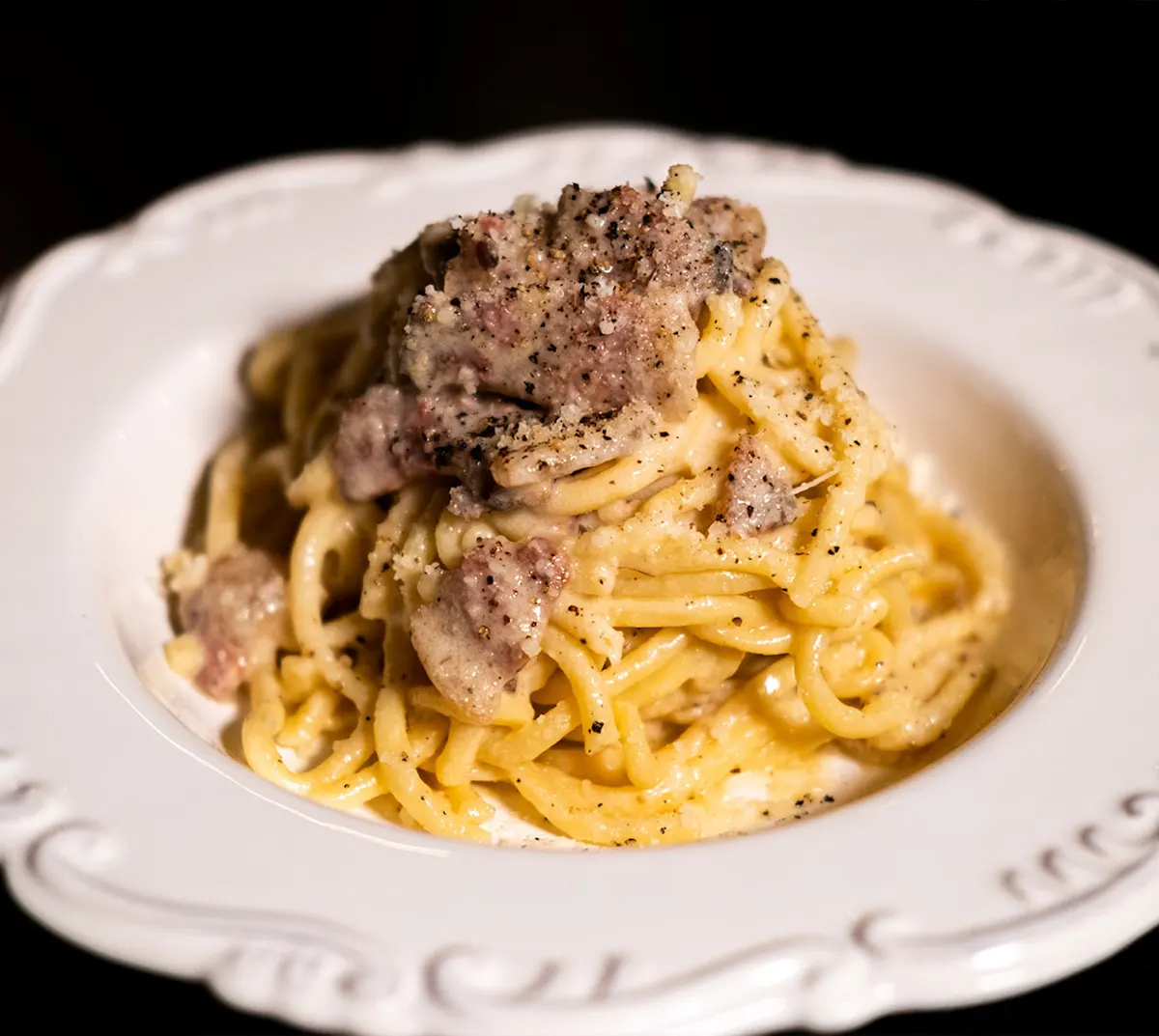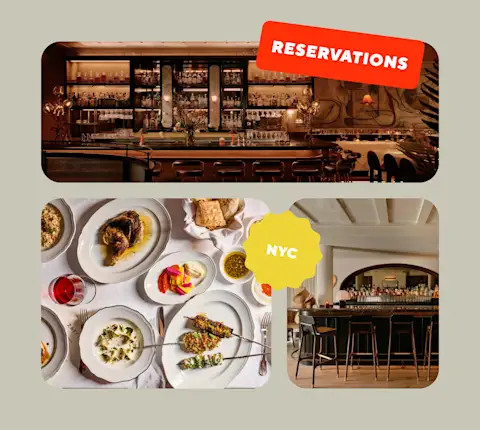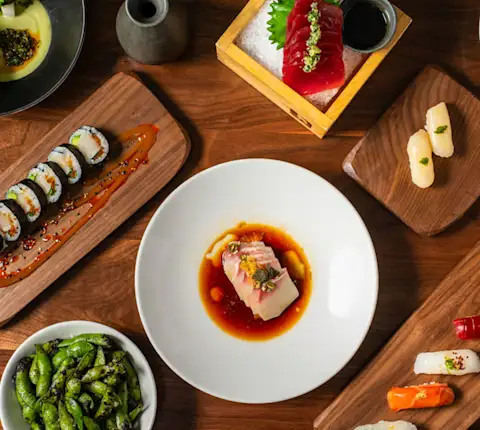*This article includes mentions of merchants or brands who are partners of DoorDash, and DoorDash may receive a commission if you choose to make a purchase from these merchants or brands.
When Matt Brewer and David Nayfeld opened Che Fico — pronounced kay-feeco and Italian for “what a fig,” or slang for “how cool” — in San Francisco in 2018, they leaned into the wordplay; they brought the city a farmers’-market–driven, rustic Italian menu set in an undeniably dope dining room on Divisadero Street. Since then, they’ve repeatedly reaffirmed their cool factor by debuting Che Fico Alimentari, its more casual downstairs annex, and through fearlessly championing industry-leading initiatives like equitable pay, profit sharing, and dining scholarships. Their latest smooth move? Revamping the menu at Che Fico Alimentari (“alimentari” means food, or groceries) to give customers what they want: world-class pizza and pasta at lower prices.
According to Brewer, a co-owner, this pivot is the result of “creative thinking for the food industry at a time when it’s required.”
When Che Fico Alimentari first opened in 2019, the space quickly became a popular, more affordable panacea for diners who wanted to experience Chef Nayfeld’s exquisite cooking but couldn’t get reservations at Che Fico. The allure was understandable, not only because it quickly garnered Michelin approval and an Instagrammed visit by Gwyneth Paltrow. Nayfeld hails from the kitchens of Michael Mina, Joël Robuchon, Albert and Ferran Adrià, Gordon Ramsay, and more. He’s also a pizza pro certified by Associazione Verace Pizza Napoletana. All to say, Nayfeld doesn’t do anything halfway, and it shows in his housemade salumi, antipasti, hand-rolled pasta, sourdough-kissed Neapolitan pizzas, wood-fired entrées, and farm-fresh sides.
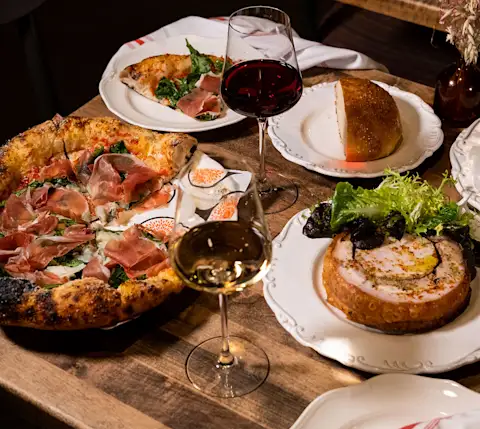
Alimentari’s menu was equally masterful but more approachable. On it were 30 to 40 dishes similar to Che Fico — think housemade salumi and bread, cheeses, antipasti, and a collection of seafood, housemade pastas, and roasted meats. But if the $27 bucatini upstairs was graced with sea urchin, nigella seeds, and spring onions, Alimentari’s bucatini was a more homey — and still exceptional — option, an $18 cacio e pepe. This symbiotic relationship worked, until COVID hit.
“We did everything to survive. We went from doing a charitable project, where the type of food didn’t matter and we were just trying to feed people, to moving to to-go only, to having different meal periods and growing into a CPG where we launched our tomato sauce,” Nayfeld explains. “After the pandemic came to an end and we reopened, we had gone through all these iterative steps along the way and it became clear that, as it was, Che Fico and Che Fico Alimentari weren’t different enough.”
Case in point: that cacio e pepe at Alimentari. After COVID, it came back on the menu with housemade tonnarelli — and a $27 price tag to offset the dramatically rising costs of benefits, labor, and ingredients. Alimentari had unintentionally morphed into more of a splurge than an everyday restaurant. “We’d forgotten our true north,” Nayfeld says.
This was their aha moment. Brewer explains, “We realized if we truly wanted [Che Fico Alimentari] to be an accessible neighborhood place you could go twice a week, we needed to make it more affordable and approachable, expand the selection of the menu that people were really attracted to, and lessen the high cost in labor and ingredients.”
To do that, they took a close look at their food and operations to streamline both. Pasta and pizza were consistent bestsellers, so they focused on that, revising the menu to feature six pizzas and eight pastas, plus a shortlist of their beloved house-made breads, antipasti, and secondi items.
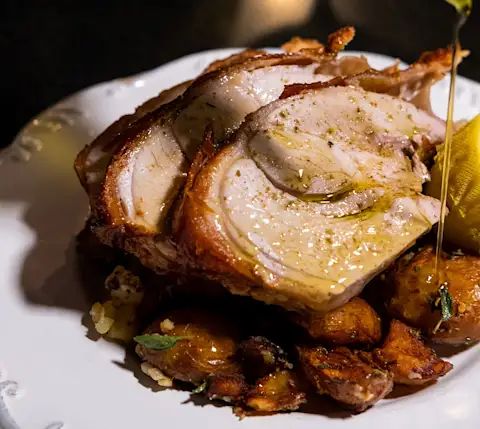
“If you have fewer things and you go through more of them, you can get better prices,” Nayfield says. Yes, bulk-buying is more cost-effective for restaurants too — except for top-quality produce, which remains pretty pricey regardless.
Then they looked at labor and did some math. It turns out it takes 30 minutes and a more experienced, higher-paid staff member — i.e. a sous chef — to make 20 orders of hand-rolled tagliatelle, but only 20 minutes and a less experienced, less expensive kitchen player to extrude 100 orders with an in-house machine. Both versions of the tagliatelle use the same quality ingredients, but extruding delivers the same great taste and texture with far more efficiency and lower labor costs. It was the better option. With that, higher-touch pasta became reserved just for the upstairs menu.
Taking advantage of the overlap of ingredients across the menu combined with savings in labor and waste translated to tangible cost cuts for the restaurant, and consequently, its guests. Today, Alimentari’s cacio e pepe — made with tubular mezze maniche and featuring Pecorino, which also appears on the Quattro Formaggi Pizza — goes for $20, and it’s as delicious as ever.
The biggest changes are both in the diner’s favor: The first is lower prices — most menu items, like the irresistible focaccia with sides of whipped mascarpone and olive oil, lemony insalata verde, and famed lasagna, are now priced in the low- and mid-twenties rather than the high twenties and up. The second is greater access: The restaurant now takes delivery orders a half an hour before opening to accommodate families with young diners.
As Brewer, Nayfeld, and their team continue to lead and experiment in the brave new world of restaurant operations, they will surely come up with more creative initiatives, though it’s likely not all of them will be universally embraced. For example, some diners aren’t thrilled with their 10-percent in-house dining fee, which was created to support full-service dining, living wages, and business stability in a notably unstable environment (if you order in, you skip the charge).
But so far customers are very receptive to the new Che Fico Alimentari. “We’ve had an amazing response. People are talking about the menu and are excited and appreciative of the changes,” Brewer says. Our community agrees. As one online review states: “Delivery from Che Fico is one of those moments when the SF rent or mortgage suddenly feels 100% worth it.”
Order from Che Fico AlimentariPHOTO CREDIT: Courtesy of Che Fico


